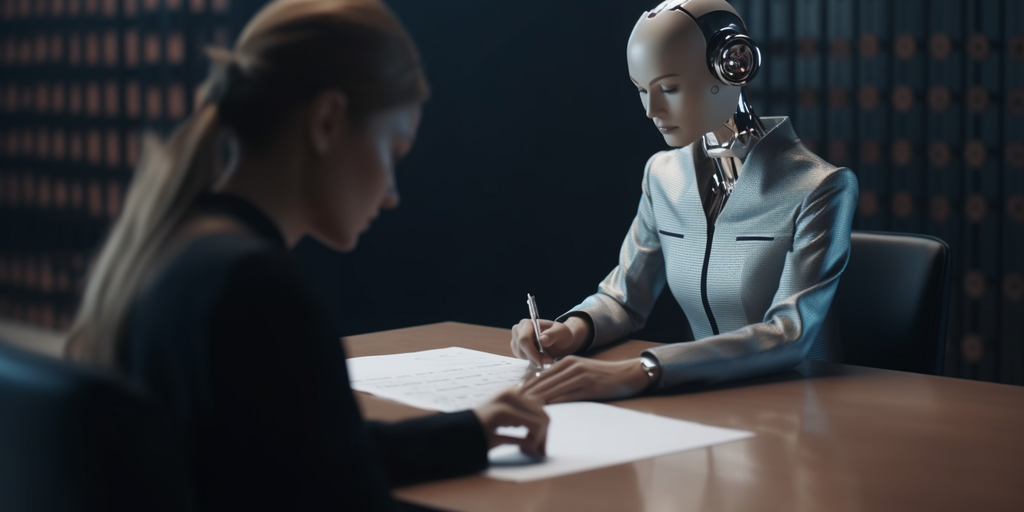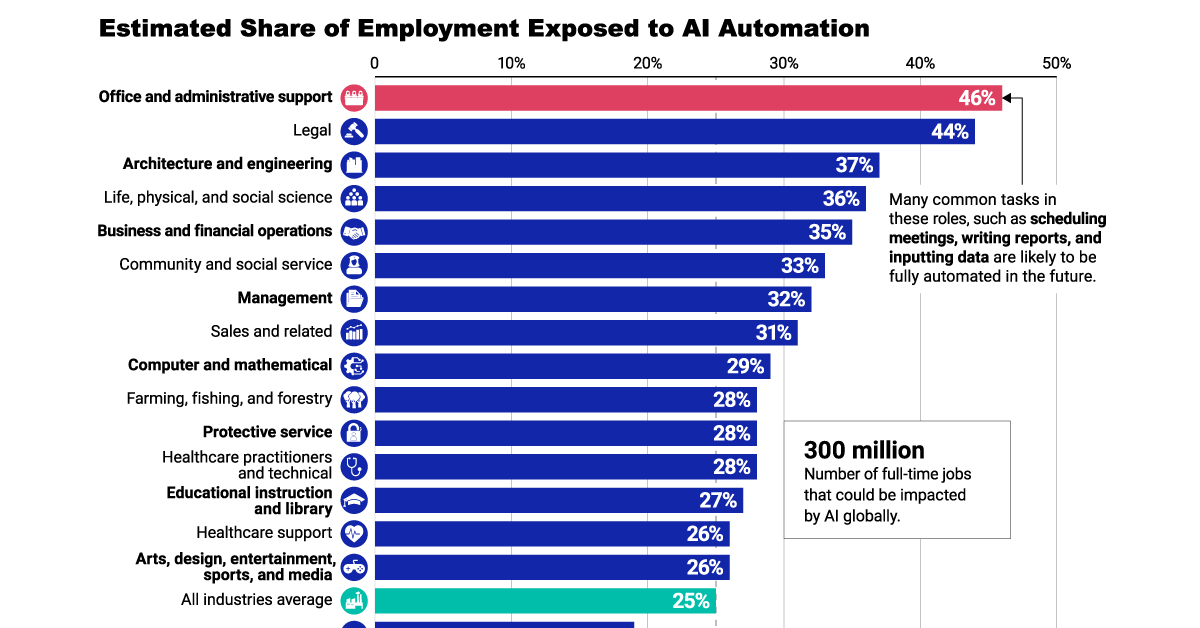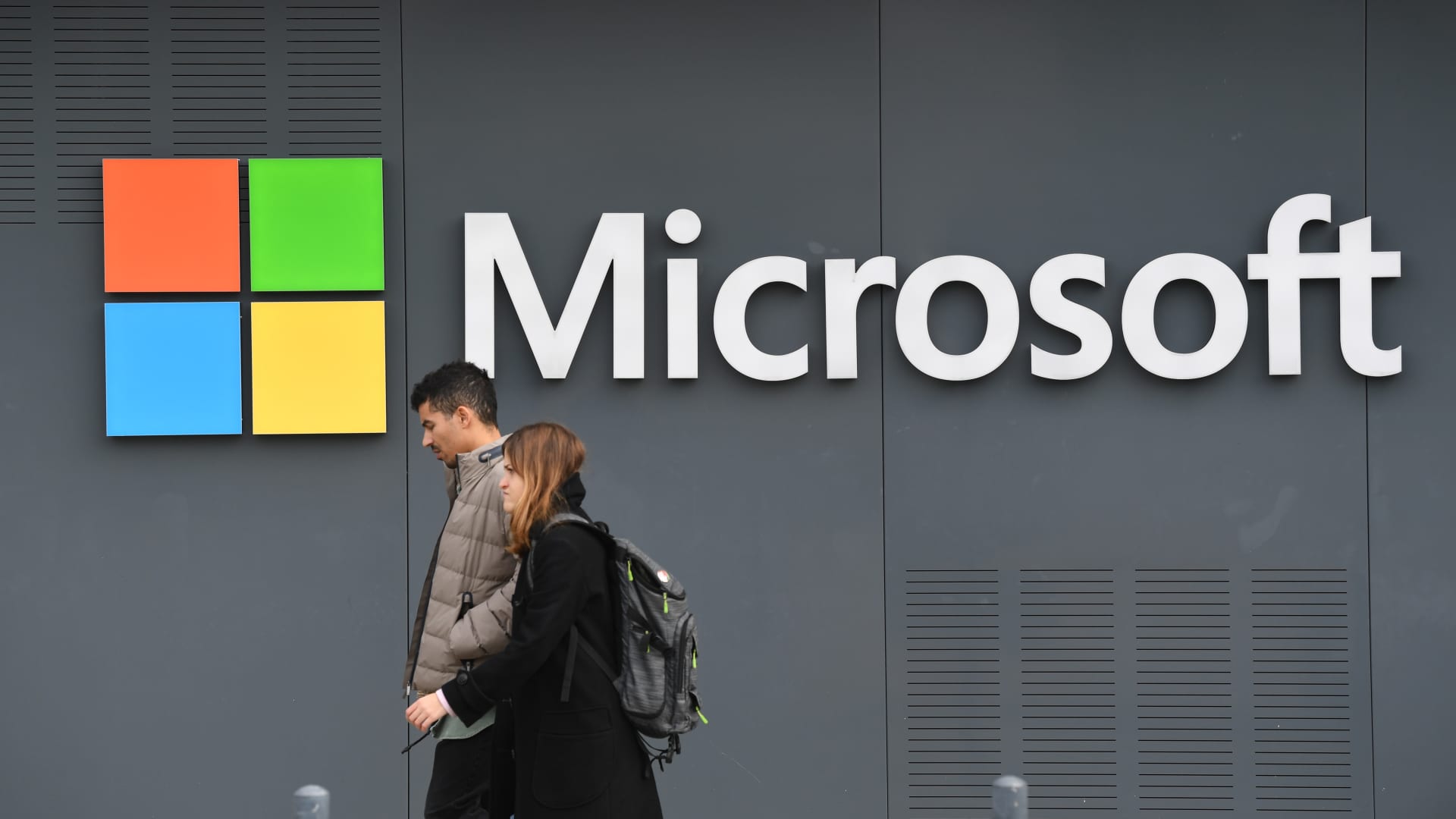- AIdeations
- Posts
- The End of Websites, Google's Missed Opportunities, and the Forthcoming Industrial Revolution
The End of Websites, Google's Missed Opportunities, and the Forthcoming Industrial Revolution
From AI disrupting traditional websites to Wall Street predicting a new industrial revolution, the landscape is evolving. Is Google set to lead or lag behind?
Welcome to Aideations. The most comprehensive daily AI newsletter on the planet! How do I know? Because I read over 50 of them, plus the news, so you don’t have to. It’s my goal to make this the most-read newsletter on AI. I can’t do that without your support and feedback.
TL;DR The Aideations Newsletter today delves into the possible extinction of traditional websites and the diminishing relevance of old-school SEO due to the rise of AI. We explore how Google may have missed significant opportunities in AI development, but still has the potential to create ground-breaking tech with projects like Gemini. Wall Street's Dan Ives predicts a fourth industrial revolution, driven by AI. The AI-powered chatbot, ChatGPT Plus, is set to enhance user experience by searching Bing on mobile devices. The newsletter also provides a sneak peek into the most recent AI research, news from the front lines, and the tools of the day.
If you've got suggestions on how I can improve the newsletter, feel free to reach out at [email protected]
Here's what we've got in store for you today:
🌎 The End Of The World Wide Web As We Know It
♟️ Googles Great Fumble
👾 Is AI The Dawn Of The 4th Industrial Revolution?
🌊 ChatGPT Plus Can Now Surf The Web on Mobile
📚 Research Of The Day
🎥 Video Of The Day
🛠 Tools Of The Day
🤌 Prompt Of The Day
🐥 Tweet Of The Day
On the Brink of Change: Will AI Usher in the End of Traditional Websites

Imagine a scene where a traditional website is being transformed into an AI-powered interface. The content is a computer screen displaying a traditional website with static pages and a mouse cursor hovering over a button labeled "Upgrade to AI". The medium is digital photography. The style is hyper-realistic with a touch of futuristic elements, reminiscent of the movie "Her". The lighting is soft and ambient, illuminating the screen and casting a glow on the surrounding desk. The colors are a mix of cool blues and grays from the website, contrasted with the warm glow from the screen. The composition is a close-up shot taken with a Canon EOS 5D Mark IV DSLR camera, EF 50mm f/1.8 STM lens, Resolution 30.4 megapixels, ISO sensitivity: 32,000, Shutter speed 8000 second. The shot should be sharp and detailed, capturing the intricate details of the screen and the surrounding environment. --ar 16:9 --v 5.1 --style raw --q 2 --s 750
Picture this: The traditional website and its landing page are on the brink of extinction. Thank AI for this disruption.
SEO as we know it, the old-school game of keywords and backlinks, is teetering on the edge of irrelevance. User patterns, they're already pivoting.
Embrace this reality; this shift won't happen overnight. Change takes time, just as payphones faded from our corners so may go the way of traditional internet searches. Technology dictated a new way of life, and user behavior adapted accordingly. It's not a stretch to imagine a similar fate awaits the website and SEO.
Some might call this prophecy audacious, disagree with it vehemently, and that's their prerogative. I don't claim to own a crystal ball, nor do I have a taste for glass. These are merely my thoughts, captured in their raw form, to remember this moment in time.
I could be utterly wrong. Yet, there's a part of me that insists I'm onto something. While I can't pinpoint the precise date and time when this seismic shift will fully occur, I am certain our use of search engines as we know it and our interaction with media is morphing, even as we speak.
Prepare to break free from the usual, to conceptualize the extraordinary. It's an invitation to think outside the box, to zag when others zig. To be daring.
Now, don't misunderstand me, there's still ample opportunity in the current landscape. It's premature for any definitive predictions. While the status quo holds, capitalize on it. However, it's crucial to anticipate and prepare for a future that might drastically deviate from what we perceive as natural and normal today.
Envision a future where AI doesn't just supplement but potentially redefines or even replaces traditional websites. A future where AI readability and engagement outstrip keyword density, where users' habits adapt faster and more comprehensively to AI solutions than we anticipate. Picture a future where AI reliably understands user context, mood, and need, outperforming traditional websites in predictability and convenience.
Because after all, it can do all those things now. The question is how long does it take for it all to come together? To form our new reality?
This future may sound audacious to some. Let them call me crazy. It's a daring vision, but the ones who dare to think differently, the ones who can spot the genius in the madness, are the ones who shape the future.
Google's Great Fumble: A Missed AI Opportunity?

It's 2017, Google has a cutting-edge tech dubbed "transformer" right in their lap. The kind that could've been the 'back to the future' hoverboard for the tech world. And then, they did the unthinkable. They sat on it. If that wasn't painful enough, they also decided to strangle Duplex, the cool AI assistant they birthed in 2018, in its crib.
Google, the tech titan, looked like they dropped the AI ball big time. It's like they were playing a hot potato game with innovation and they decided, "Nah, we'll pass." And, the reason? Well, my best guess is it could've been the seismic shock that might've rattled their well-structured business model.
Fast forward to today, they're scrambling to pick up the pieces. Can they do it? Heck, yes. They're Google, after all. With a war chest of billions and research teams that could give Elon Musk's dreams a run for their money, they've got plenty in their favor. Gemini, the pet project of DeepMind, their sub-company, is rumored to have a mind-boggling number of parameters—try counting up to a trillion, and you'll get the idea.
Everything DeepMind does is more or less akin to a rock concert—cool, loud, and earth-shaking. I've got no doubt that Gemini and their future Alpha projects are gonna be on the 'AI Hall of Fame' poster someday.
But let's not forget the colossal faux pas. Their foray into AI products for us, the regular Joes and Janes, has been, well, a lot like my attempt to do the tango. A lot of stumbling, stepping on toes, and ultimately, a fall flat on the face. As an AI junkie who's been following this field since the 2014 documentary "Humans Need Not Apply," it was a disappointment. AI felt like an exclusive party, only accessible if you had a swanky 'researcher' tag hanging around your neck.
Their story reminded me of Xerox who had the golden goose of GUI but decided to just, I don't know, let it lay regular eggs? Or IBM who hoarded their database research like a secret recipe. They had the future in their hands and they chose to sit on it, letting others swoop in and take the glory.
So here's hoping Google learns from their past, shakes off the dust, and gives us some jaw-dropping AI tech. We're all waiting, Google. No pressure.
AI Triggers Fourth Industrial Revolution, Says Wall Street's Dan Ives

Picture a scene where Wall Street's Dan Ives is seen giving a speech about AI triggering the Fourth Industrial Revolution. The content is Dan Ives on a stage, with a large screen behind him displaying graphics of AI and industrial machinery. The medium is event photography. The style is hyper-realistic with a touch of drama, akin to the visuals in "The Social Network". The lighting is stage lighting, highlighting Ives and casting dramatic shadows. The colors are a mix of warm tones on Ives and cool blues on the screen behind him. The composition is a mid-shot taken with a Nikon D850 DSLR, Nikkor 70-200mm f/2.8E FL ED VR lens, Resolution 45.7 megapixels, ISO sensitivity: 25,600, Shutter speed 1/2000 second. The shot should be highly detailed, capturing the expressions on Ives' face and the graphics on the screen. --ar 16:9 --v 5.1 --style raw --q 2 --s 750
Hold onto your hats, folks. Dan Ives from Wedbush Securities is saying that we're in the throes of the "fourth industrial revolution". Remember when everyone and their dog was getting dial-up and AOL CDs were the hottest coaster in town? Ives reckons we're back in a '95-style tech explosion, only this time, it's not about "you've got mail," but "you've got AI."
This isn't some fly-by-night, pump-and-dump tech bubble, according to our friend Dan. No sirree, he's talking about game-changing, life-altering tech that'll be shaping our reality for the next 20 to 30 years. And to the naysayers, the bears who keep raining on our tech parade? Ives is like, "Bears, shmeares."
So, what's lit this rocket, you ask? Look no further than OpenAI’s viral sensation, ChatGPT. The chatbot that's more human than your Uncle Larry after a few holiday eggnogs (I mean, we've all been there). This AI wizardry had people's jaws hitting the floor and caused an adoption surge.
And don't get Ives started on Nvidia. He believes their recent stellar performance, with a staggering first-quarter profit of $2 billion and revenue of $7 billion, is just the tip of the silicon iceberg.
Talking about big bucks, Ives predicts we're looking at a cool trillion dollars of incremental spend over the next decade. If your eyes just popped out of your head, that's okay – mine did, too. He even hints that his guesstimate might be on the low side. Yes, you read that right: a trillion could be a conservative estimate.
So, what does this mean for investors? Ives says this isn't just some AI gold rush; it's a defining moment in tech history. The last time he felt this level of excitement was when the Internet was the new kid on the block in '95 and when Apple dropped the iPhone in 2007. He's not just talking about the next big thing; he's talking about the thing that'll make the next big thing look like a pet rock.
So, it's time to buckle up, guys. If Ives is right, we're not just riding the wave, we're about to hit a tsunami of technological revolution. And who knows? Maybe in a few years, we'll be telling our grandbots about the time we watched the world change, right from our couches. Strap in, folks. The future is here, and it's AI-mazing.
Surf's Up for ChatGPT: AI-Powered Chatbot Now Searches Bing on Mobile Devices

In the latest tech news, OpenAI's AI-powered chatbot, ChatGPT Plus, is set to make life easier for mobile users. The chatbot, which can already browse the web via Bing on its web interface, is extending its talents to the smartphone app. Yes, you read it right – ChatGPT's web surfing feature is coming to a mobile screen near you this week!
By going into the New Features section of the ChatGPT app settings, users can activate this browsing feature. Once there, all you need to do is select "GPT-4" in the model switcher, then pick "Browse with Bing". Available to both iOS and Android users, this addition extends ChatGPT's knowledge base beyond its 2021 training data, making it a handy tool for questions about current events or other recent topics. This Bing-enabled browsing feature is set to boost the usability of the app, giving users an even more comprehensive AI assistant experience right in the palm of their hands.
📰 News From The Front Lines: 📰
📚 RESEARCH 📚

Title: DragDiffusion: Harnessing Diffusion Models for Interactive Point-based Image Editing
Authors: Yujun Shi, Chuhui Xue, Jiachun Pan, Wenqing Zhang, Vincent Y. F. Tan, Song Bai
Executive Summary:
This research paper presents a new method called DragDiffusion for interactive point-based image editing. The authors extend the editing framework of DRAGGAN, a method based on generative adversarial networks (GAN), to diffusion models. This extension improves the applicability of interactive point-based editing in real-world scenarios. The method optimizes the diffusion latent to achieve precise spatial control. The authors demonstrate that optimizing diffusion latent at one single step suffices to generate coherent results, enabling DragDiffusion to complete high-quality editing efficiently. The method is tested across a wide range of challenging cases, demonstrating its versatility and generality.
Pros:
DragDiffusion improves the generality of "drag" editing, making it applicable to a wide range of cases.
The method optimizes the diffusion latent to achieve precise spatial control.
It can generate coherent results by optimizing diffusion latent at one single step, making the editing process efficient.
Cons:
The method is based on diffusion models, which require a multi-step process to generate an image. This could potentially affect the accuracy of the output image.
The editing results could suffer from an undesired shift of object identity or image style, although the authors propose a solution to mitigate this problem.
Use Cases:
DragDiffusion can be used for interactive point-based image editing in various scenarios, including images with multi-objects, diverse object categories, and various styles.
The method can be used in applications that require high-quality image editing with precise spatial control.
It can also be used in applications that require efficient image editing, as the method can generate coherent results by optimizing diffusion latent at one single step.
📼 Video Of The Day 📼
🛠️ Tools Of The Day 🛠️
SuperAGI - A SuperAGI agent template to create simple software projects.
The Gist - Unified AI workspace to supercharge humans.n waitlist
Unicorn Platform - Pick a landing page template, throw in your idea to our AI and get your website ready in seconds.
Body Scan - Turn your body data into a fitness plan.
Rosebud - An AI-powered journaling app that helps you self-reflect and create your personalized path to fulfillment.
Process.St - From Operational Chaos to AI-Powered Precision.
🤌 Prompt Of The Day 🤌
Today’s Prompt Of The Day Is Brought To You By “The AI Solopreneur”
I need you to suggest "personal monopolies" for me based on my situation.
A personal monopoly is something that:
1) I am uniquely good at
2) Nobody else is doing
3) The market has demand for
4 ways to create a personal monopoly or are:
1) Solving a new problem no one else is solving
2) Solving an existing problem for an ultra-specific target customer
3) Solving an existing problem with a unique mechanism
4) Solving an existing problem because of a unique motivation
For context, [ADD CONTEXT]
Now, based on my context, come up with 10 ideas for personal monopolies for me, and for each add one sentence explaining why you see this as an opportunity.🐥 Tweet Of The Day 🐥
If you don't take advantage of ChatGPT in 2023, you will be left behind.
Here are 10 ChatGPT threads you should’ve read already:
— Chris Cunningham (@ChrisClickUp)
12:00 PM • Jun 28, 2023
Thanks for tuning in to our daily newsletter. We hope you found our tips and strategies for AI tools helpful.
Your referrals mean the world to us. See you tomorrow!
Interested in Advertising on AIdeations?
Fill out this survey and we will get back to you soon.
DISCLAIMER: None of this is financial advice. This newsletter is strictly educational and is not investment advice or a solicitation to buy or sell any assets or to make any financial decisions. Please be careful and do your own research.








